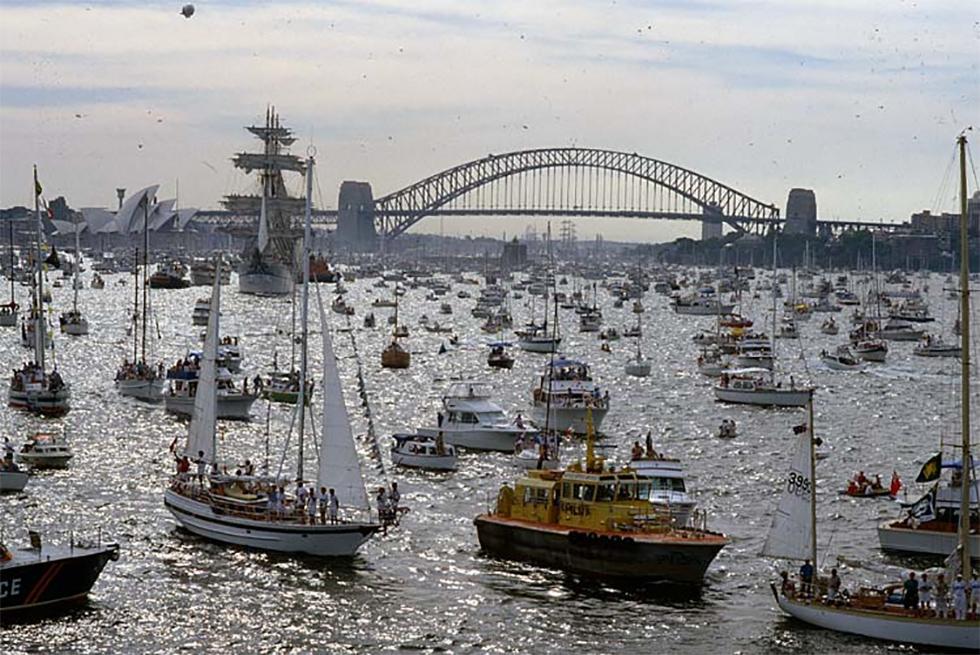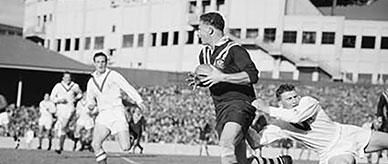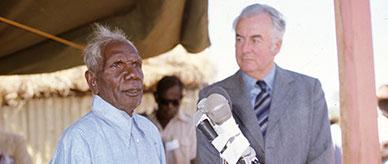


About this record
This is a colour photograph showing a flotilla of spectator craft gathered within Sydney Harbour to view and farewell the historic tall ships, as part of Australia's Bicentenary celebrations in 1988. This special event was named the 'Parade of Sail'. At least one tall ship is visible among the fleet, which included classic gaff-riggers, modern and traditional skiffs, naval and merchant ships, motor boats and yachts. The Sydney Harbour Bridge and the Sydney Opera House can be seen in the background.
Educational value
- The Tall Ships pictured were part of the 1988 Bicentenary celebrations commemorating the arrival of the First Fleet in New South Wales and the beginning of European settlement in Australia. Tall Ships Australia 1988 was one of the most spectacular events of the Bicentennial year and was organised by Dr Jonathan King, a descendant of Governor Philip Gidley King (1758–1808). The ships, invited by the Australian Government from 30 countries, re-enacted the First Fleet's voyage as part of the celebrations.
- The Tall Ships project was both expensive and difficult to organise, costing some $11 million and taking ten years to reach its conclusion. The eleven square-rigged ships which retraced the original voyage led by Captain Arthur Phillip left Portsmouth, England, on 13 May 1987, arriving in Botany Bay in early 1988. The ships carried nearly 100 paying guests, crew and enthusiasts. Public contributions had to be called for at one point to enable the ships to continue to Australia.
- The ships had started arriving in Sydney from 19 January, having completed the International Tall Ships Race from Hobart to Sydney, an event organised by Britain’s Sail Training Association and the Bicentennial Authority. On the morning of 26 January, the First Fleet re-enactment ships sailed into Sydney Harbour and this photograph probably shows part of the tall ships fleet sailing out of the Harbour in the Parade of Sail that afternoon.
- Millions of people were involved with the ships in some way. In the days before the event, visitors were able to board the larger tall ships berthed at Darling Harbour's commercial wharves in Sydney, and on the evening of 25 January several tall ships anchored east of the Sydney Harbour Bridge for the night, dressed with floodlit spars and rigging. An estimated 2.5 million people watched the arrival and departure of the ships from the shore or their own craft.
- The federal government had taken responsibility for the Bicentenary with the setting up of the Australian Bicentennial Authority (ABA) in 1980 and for the first time in 1988 the Australia Day public holiday was gazetted to be held permanently on 26 January. In the past the holiday had been held on the Monday closest to 26 January and to many people it was just another day off work and lacked special significance. It was hoped that fixing the date would foster greater understanding of the landing of the First Fleet in 1788.
Acknowledgments
Learning resource text © Education Services Australia Limited and the National Archives of Australia 2010.
Related themes
Need help with your research?
Learn how to interpret primary sources, use our collection and more.


